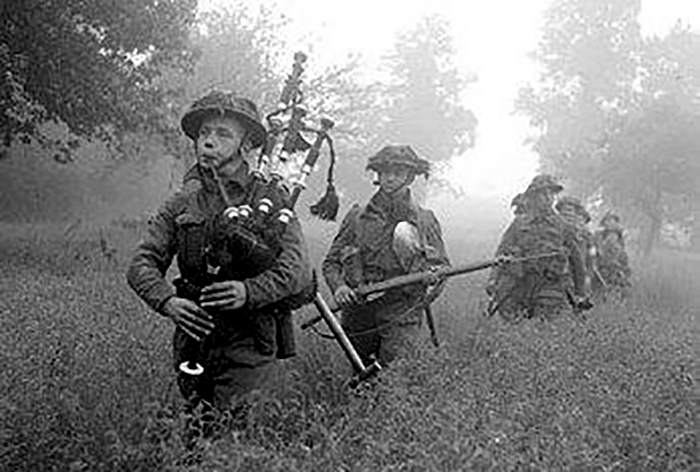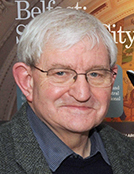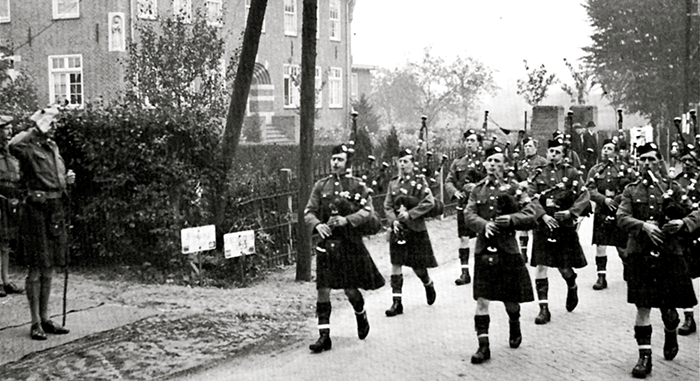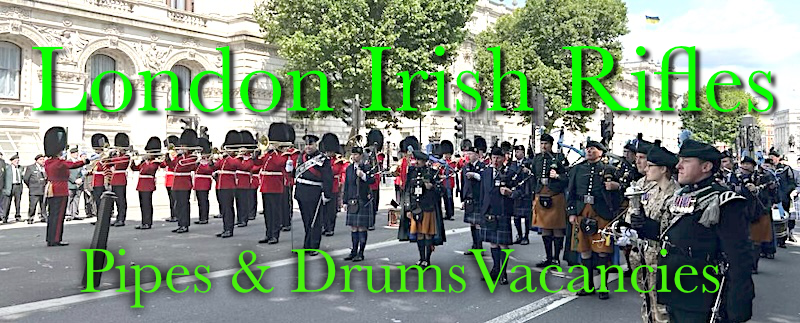
Ulster piper and RSPBA adjudicator Harry Stevenson continues his look at pipe tunes associated with World War II…
With the German and Italian forces defeated in North Africa, the Allies moved on to Sicily and after success there, the next objective was to invade mainland Italy. Italy was regarded as the ‘soft underbelly of Europe’ but proved to be anything but.
The town of Cassino lies 80 miles south of Rome. It is overlooked by high ground surmounted by the beautiful Benedictine abbey of Monte Cassino.

The Allies mistakenly thought that the abbey was occupied by the Germans and American bombers reduced it to rubble. The Germans then used the ruins as a strong defensive position and it took four battles to ultimately force them to withdraw. It was Polish soldiers who finally took possession of the abbey ruins, though not without losses: they suffered 4,000 casualties. Total Allied losses at Cassino were 55,000; the Germans lost 20,000.
The 6/8 march the Heights of Cassino was written by Pipe Major Donald MacRae of the 2nd Battalion Cameron Highlanders. The final push to Rome led to the Italian forces surrendering. A major obstacle to the Allied advance north was the River Po. The 3/4 retreat march, the Argylls Crossing the River Po, was written by Robert H. Brown of the 1st Argylls, a very gifted composer who lived in Linlithgow:
Very few tunes exist about the Royal Navy’s part in the war but here are two: an arrangement of the jig Rodney, Repulse and Renown from the book ‘In the Best of Company’, and an arrangement of the hornpipe HMS Renown by Pipe Major Donald Shaw Ramsay. HMS Rodney was built by Cammell Laird in Birkenhead, the Repulse at John Brown’s shipyard in Clydebank and the Renown by Fairfields in Govan on the Upper Clyde.
All three ships were involved in the hunt for Germany’s largest and most heavily armed battleship, The Bismarck. It was the Rodney which inflicted direct hits on the pride of the German Navy, hits which led to its sinking in May 1941.
To precede these two tunes is one of our most beautiful slow airs, The Flight of the Eaglets. It was written in memory of the three sons of Lady Rachel MacRobert who all lost their lives serving with the Royal Air Force, Alastair in a flying accident, and Roderick and Ian both killed in action.
Lady MacRobert subsequently sponsored a Stirling bomber which was named ‘MacRobert’s Reply’. The Stirling was the first of the four-engined heavy bombers and was built by Short Brothers in Belfast. Watch the video to the end for more on MacRobert’s Reply:
Flight of the Eaglet’s, sometimes known as MacRobert’s Lament, was written by the legendary Pipe Major Willie Ross of the Scots Guards, a veteran of the South African and Great Wars, who for many years was the Principal Instructor at the Army Piping School in Edinburgh Castle.
On the 6th June 1944, D-Day, the Allies launched Operation Overlord, the invasion of Europe. It began with the landings on the Normandy beaches and the liberation of France. After eleven months of bitter fighting the Allies entered Germany from the west and the Soviets from the east and once Berlin fell Germany surrendered unconditionally. The next three tunes come from this time.
The first is The Plains of Normandy, a slow march written by Pipe Major John A. MacLellan of the Seaforth Highlanders. In 1958 he won the Gold Clasp at Inverness, the Senior Piobaireachd at Oban and the Former Winners’ March, Strathspey and Reel at both venues, the only piper ever to do so. A book of his piobaireachd compositions was published in 2016.
Second we have Gliding to Arnhem. Operation Market Garden was a plan to shorten the war by seizing and securing the bridges over the Rhine at Remagen and Arnhem. Glider borne infantry and paratroops landed but British intelligence failed to discover that two German Panzer Divisions were located near Arnhem. The resulting actions were disasterous for the Allies. Of the 10,000 troops who landed, 1,500 were killed and 6,500 taken prisoner. The tune was written by D. MacArthur of whom nothing else is known.
The third tune is the 10th Battalion HLI Crossing the Rhine by Pipe Major Donald Shaw Ramsay. It commemorates the regiment’s River Rhine crossing using Buffalo Amphibians in 1945:
After the war Pipe Major Ramsay led the Edinburgh City Police Pipe Band in their World Championship wins in 1950 and 1954. He was shot on duty in Edinburgh and moved to California to recover. In the mid 1960s he became Pipe Major of the famous Invergordon Distillery Band.

The war in Europe ended on the 5th May 1945, but the fighting continued in the Far East.
- The final part in this series to follow. Read part one here.

















Wonderful series. So good enough that it should be made into a PBS, or similar, documentary series. Love the music part, the history part. Well done.
I played ‘Gliding to Arnhem’ with my 153 (Highland) Regiment, Royal Corps of Transport band back in the1970s. I first heard it from an extended play (E.P.) record by The Edinburgh City Police Pipe Band under Donald Shaw Ramsay that I owned as a boy. I always thought it a rather good tune and, apparently, so did Pipe Major Ramsay. However, I felt compelled to drop it after a while after much resistance from some pipers in my band. As far as I am aware, I am the only person I know who likes it.